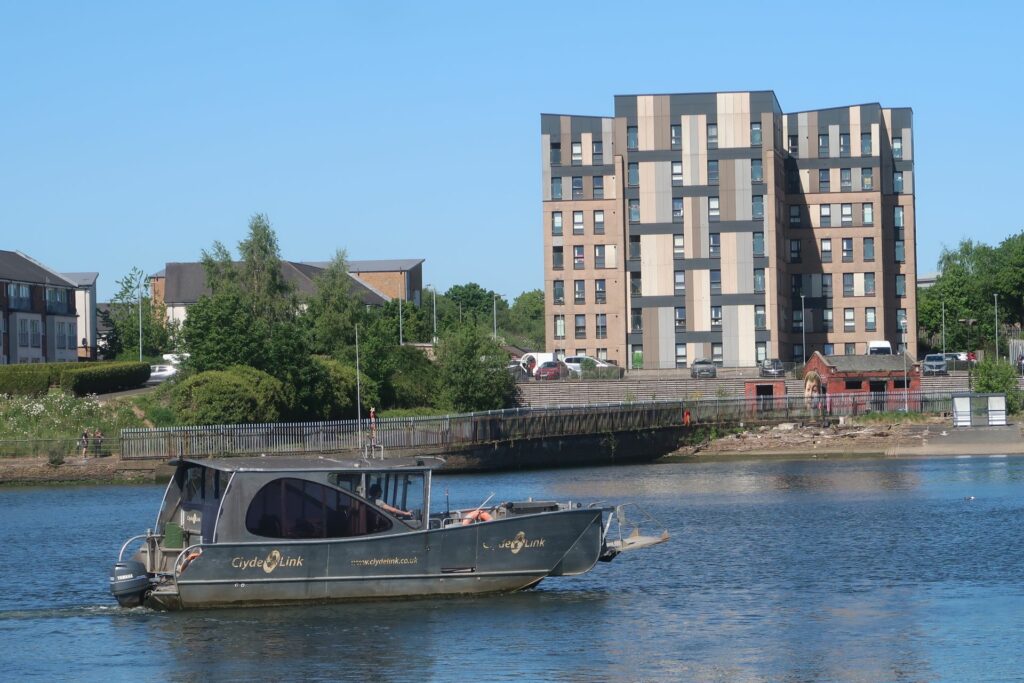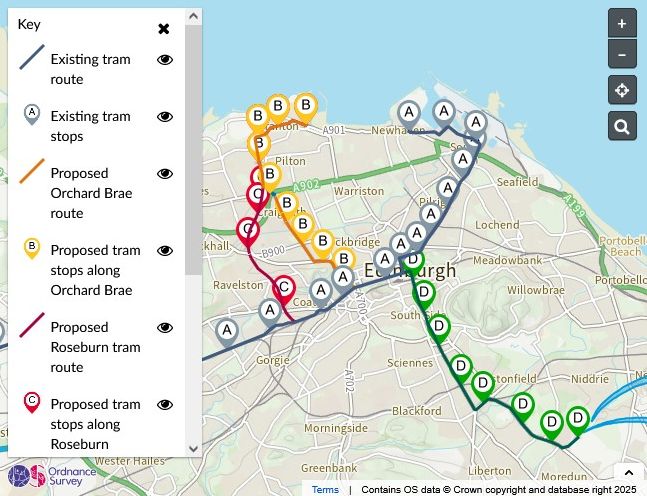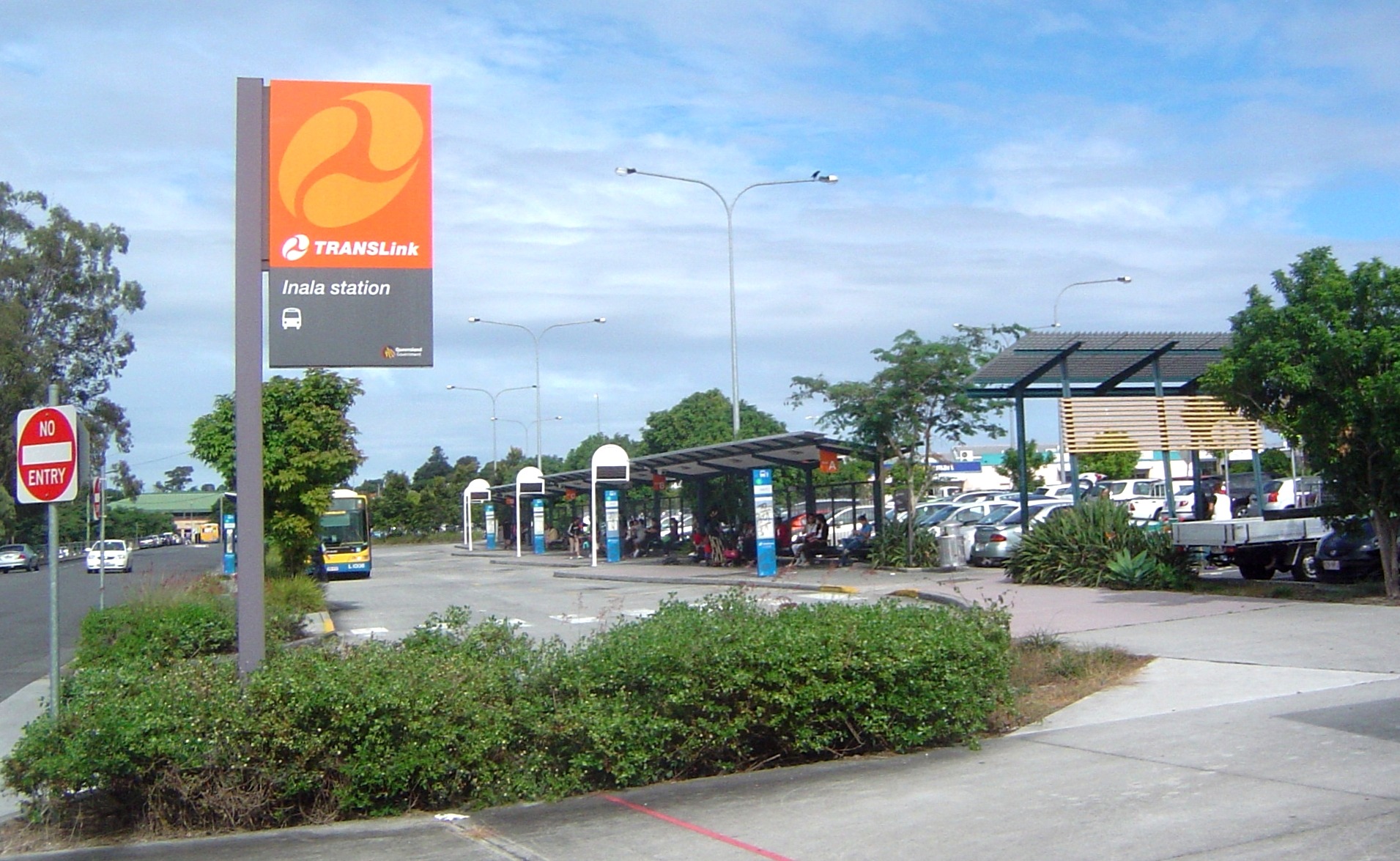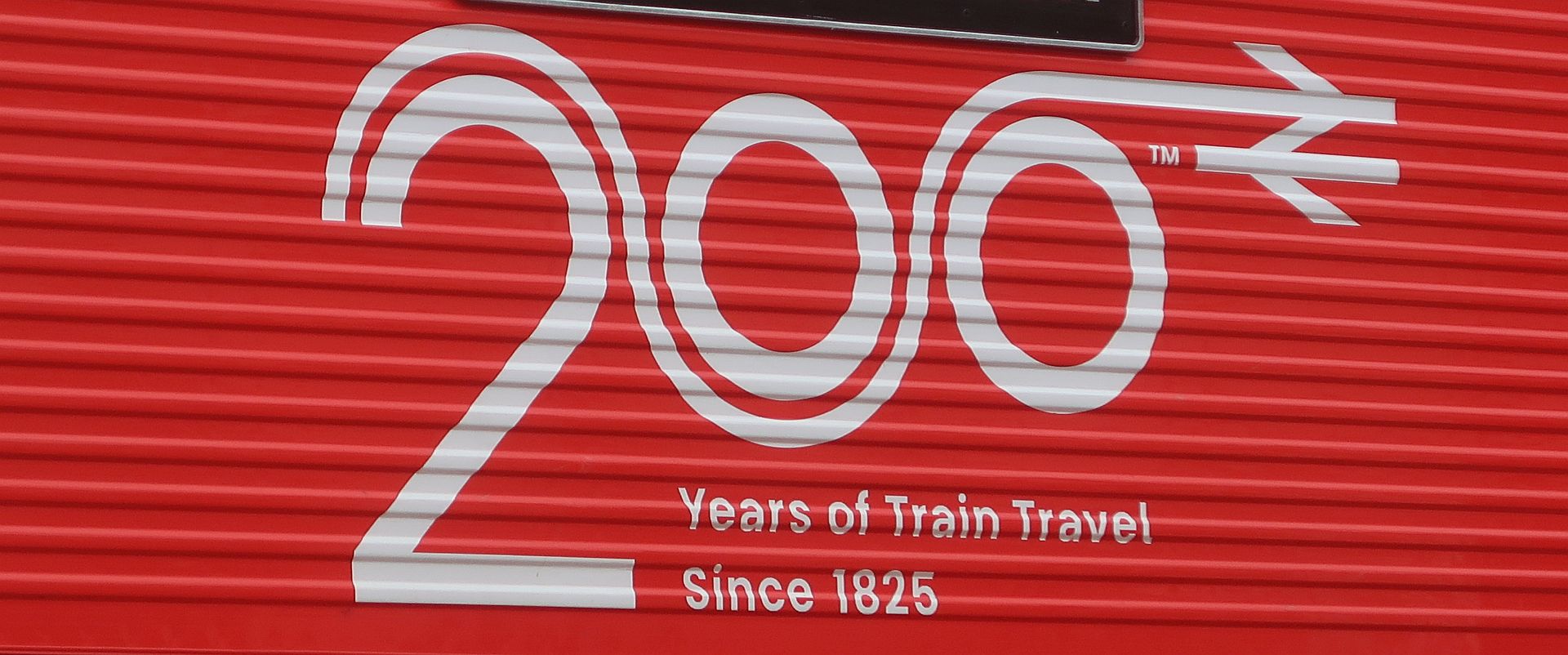The Renfrew-Yoker passenger ferry was withdrawn on May 31, severing a public transport link across the River Clyde which had existed for over 200 years. The current ferry operator had been operating since 2010 without subsidy, and the basic fare at the time of closure was £3.00 for a single crossing
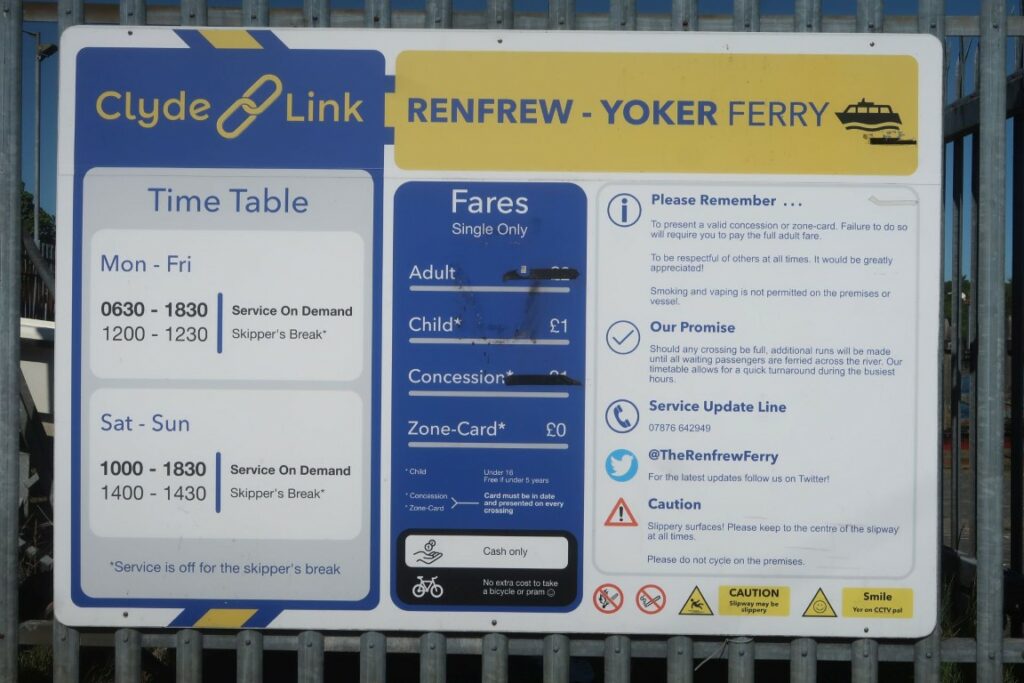
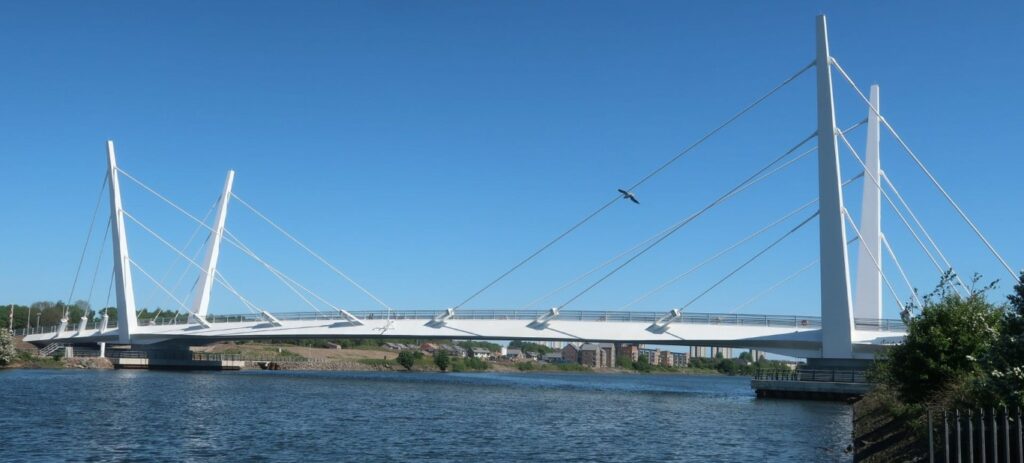
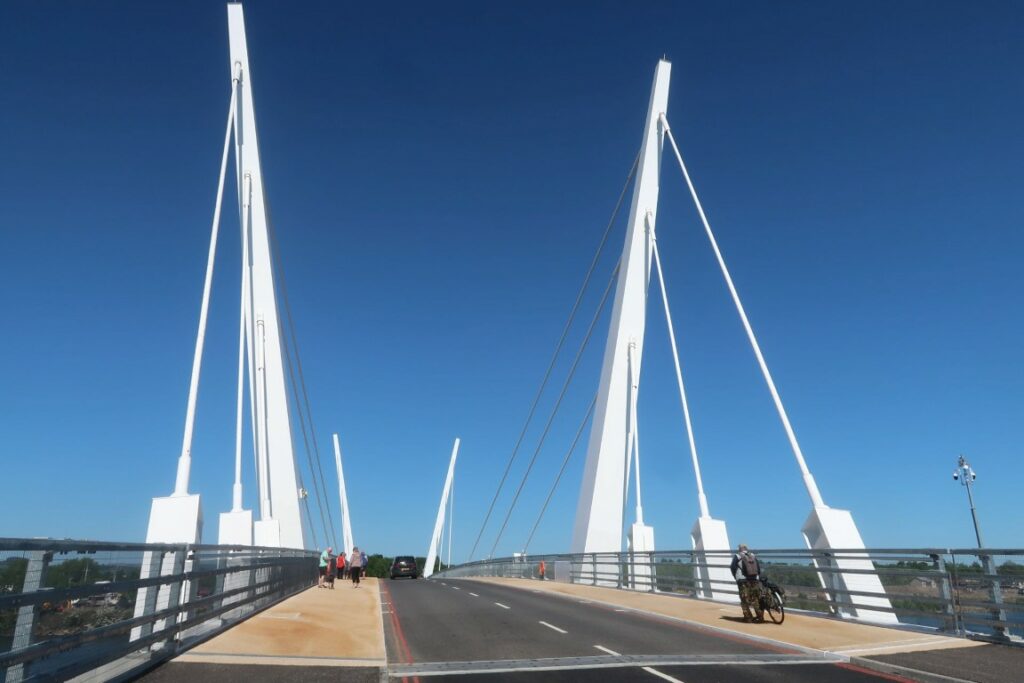
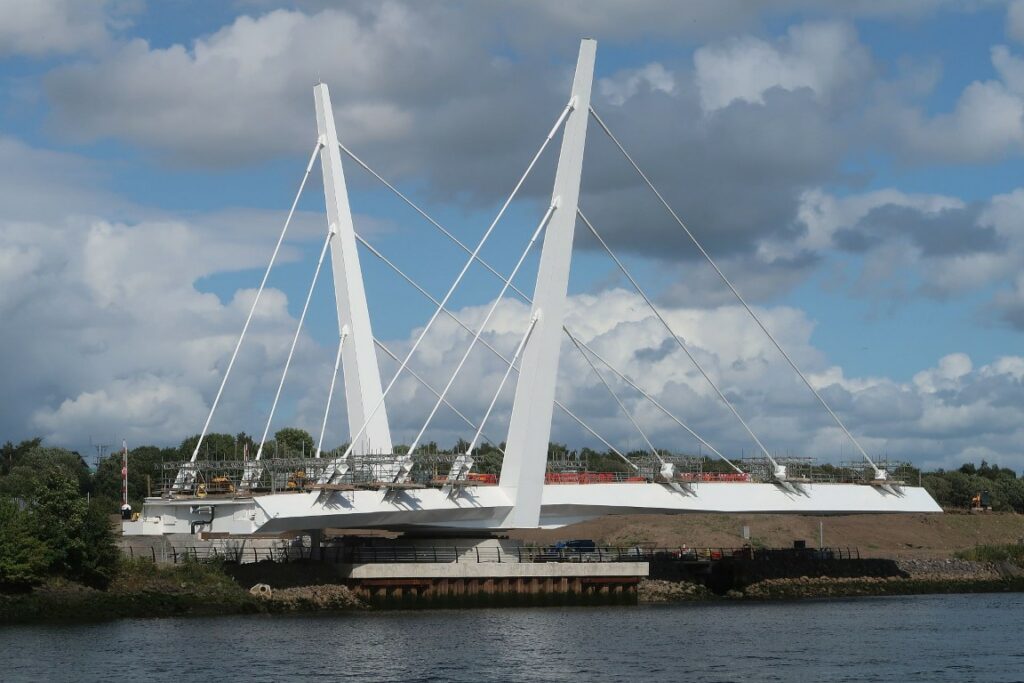
As an opening bridge, river traffic is given priority, so there will be occasions when the bridge is unavailable for all road users. Such information will be posted as early in advance as possible on the council website and on digital traffic signage to support.
Some of these closures are lengthy, such as this example on the date of writing this article:

When this occurs, car drivers are able to revert to their previous route via the Clyde Tunnel which would amount to a 6 mile round trip. However, this is not an attractive option for pedestrians and cyclists who would previously have used the small ferry.
The £117M development, led by Renfrewshire Council, received significant funding from both the Scottish and UK governments, contributing £39M each, as well as an additional £1.7M from Transport Scotland.
The promoters expect the bridge to open up work, health, education and leisure opportunities on both sides of the river. It is also claimed that the new routes will reduce congestion and shorten journey times, improving public transport reliability.
The bridge also offers a direct link to Yoker Railway Station from Renfrew for the first time. This is positive as Renfrew once had 3 stations which all closed about 60 years ago. As the distance between Renfrew Cross and Yoker station via the bridge is over a mile, this is most useful for cyclists as car parking is limited, and pedestrians would need public transport.
However there are no longer any cross river public transport connections at Renfrew.
Local councillors and communities have been amongst those calling for bus services to be provided across the new bridge, with approaches having been made to local operators.
One suggested option was for FirstBus to extend part of their frequent 77 route from Braehead Shopping Centre, where alternate buses currently terminate, onwards to Clydebank via the Renfrew Bridge, which is about half a mile west of Renfrew. This would have provided new direct links from Clydebank to a major shopping centre and to the strategic Queen Elizabeth University Hospital (QEUH), with numerous bus connections available from both.
FirstBus have responded publicly to state that they cannot run a bus service across the new Renfrew Bridge at the present time, due to the ‘unpredictability’ of the crossing’s closures.
Comparisons have been drawn with the iconic Tower Bridge in London which opens to river traffic much more frequently – buses on 3 regular services simply wait in the queue of traffic.
Considering that long closures are only planned for large ships passing with advance notice, the Renfrew Bridge is available for road traffic, pedestrians and cycles for most of the time.
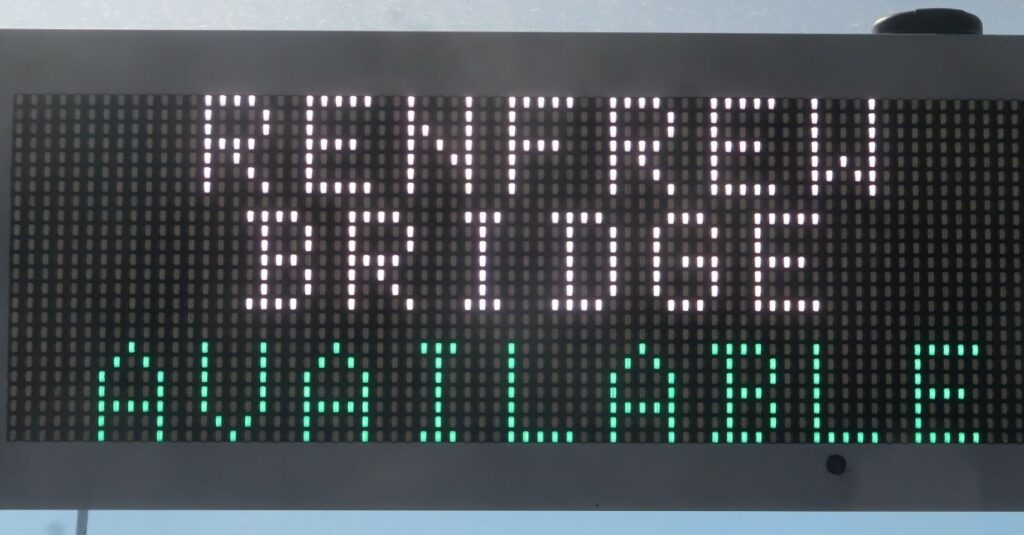
So the simplest solution could be to have a dedicated bus service operating as follows:
Clydebank-Renfrew Bridge-Braehead Shopping Centre-QEUH: when bridge is available
or
Clydebank-Scotstoun-Clyde Tunnel-QUEH when the advance signs for the bridge say closed. This long way round option would still allow other connections to Braehead and Renfrew etc.
Less likely solutions include another subsided passenger ferry service, such as the aptly named ‘Yoker Swan’, which was one of a pair financially supported by Strathclyde Partnership for Transport from 1984 until 2010. An even more unlikely solution would be the return of the ‘Amfibus’ which Stagecoach briefly trialled on this Renfrew-Yoker crossing in 2010.

